==================
Florida Splendors is supported by our audience. When you purchase through one of our links, we may earn a small affiliate commission. As an Amazon Associate I earn from qualifying purchases. Your cost is not affected.
Bird Watching in Florida: Florida, a state of abundant natural wonders, offers a bird-watching experience like no other. With its diverse ecosystems, from the iconic Everglades to the captivating Corkscrew Swamp Sanctuary, Florida is a prime destination for bird enthusiasts. Home to a remarkable array of species, including rare and migratory birds, the Sunshine State beckons both seasoned birders and nature lovers.
Join us on a journey through the top bird-watching spots in Florida, where each location unfolds a unique chapter in the captivating story of avian life. Explore the depths of the Everglades, discover the secrets of Dry Tortugas National Park, and witness the flourishing biodiversity that makes bird watching in Florida an unparalleled adventure.

In addition to beautiful lakes, breathtaking islands, subtropical specialties, and rare birds, Florida is the fifth most species-rich US state. Indeed, bird watching in Florida offers birders a multitude of experiences. Look for the bonus section below, too— Eagle Cameras in Florida are popular with people worldwide! As a nature lover, you might have already visited or are planning to visit Florida. The southern peninsula, featuring subtropical habitats, is home to numerous species you cannot spot anywhere else in the United States.
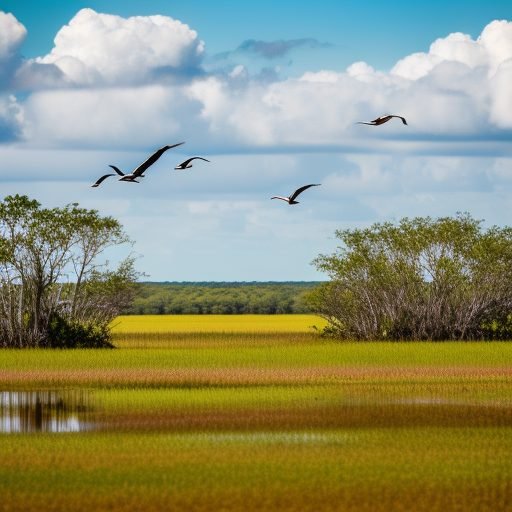
When touring the Sunshine State, you will undoubtedly want to explore the Everglades, which is among the most significant wilderness areas you can visit in North America. However, that’s not it. The state has much more to offer than its national park.
Florida Values its Native Environment
With over 34 million acres, Florida is the second-largest US state east of the Mississippi River. The government spends a massive amount annually on environmentally sensitive lands. Because of the climate, plenty of beaches, and theme parks, the state experienced massive immigration for years.
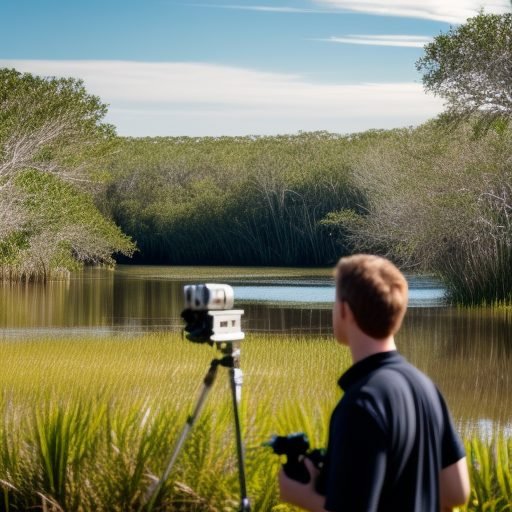
As a result, the Sunshine State is expected to become the third most populous US state soon, surpassing New York. The state naturally has three regions: Peninsula, the Panhandle, and the Keys. If you are a birder looking for Florida specialties, you don’t have to travel north of the central peninsula.
The northern peninsula and panhandle feature unique birding spots. However, you may have to travel much east of North America. Those who want to see rare birds, such as Snail Kites, Roseate Spoonbills, Florida scrub jays, Mangrove Cuckoos, and Black-whiskered Vireos, should explore south of the Orland area.
A seven to ten-day nature tour in southern Florida in early April and mid-May will allow birders to see all the Florida specialties.

Top Bird-Watching Spots in Florida
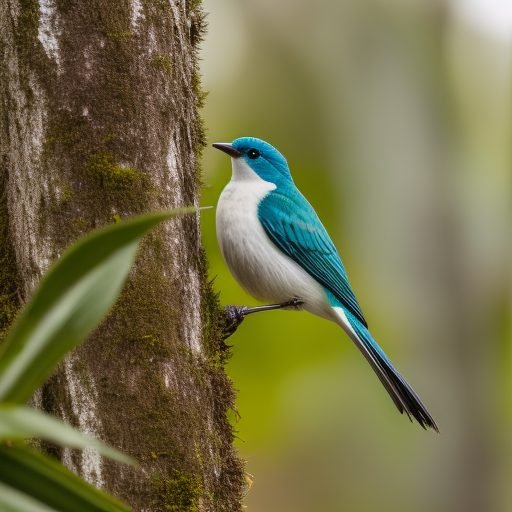
1. Everglades National Park
Best Birding Season: December to March
The #1 place for bird watching in Florida is the Everglades National Park. Apart from alligators dominating the animals’ popularity, the Everglades is home to various fascinating wildlife, especially birds. Various famous artists, including John James Audubon, have captured birds in paintings as a symbol of the Everglades.
According to stats, in the 1800s, the Everglade was home to numerous wading and migratory birds that darkened the skies with their whopping numbers.
However, in the twentieth century, the bird population significantly declined in the Florida Everglades due to the loss of habitats and hunters.
Despite this, the park is still home to more than 350 bird species to attract birders from all across the country. Most of these bird species are year-round, while others are migratory, and you can see them in winter. Everglades is one of the best spots for quickly sighting high concentrations of diverse species.
What's Inside
- Most Significant Wading Birds in Everglades
- Most Significant Rare Species in Dry Tortugas
- Significant Bird Species
- Significant Bird Species
- Significant Birds
- Most Significant Birds
- Commonly Seen Birds
- Rare Breeding Bird Species
- Commonly Seen Birds
- Commonly Seen Birds, bird watching in Florida.
- What is the best time to go bird watching in Florida?
- Are there guided bird-watching tours available in Florida?
- How can I contribute to bird conservation efforts while bird watching in Florida?
Most Significant Wading Birds in Everglades
Everglades is home to about sixteen different wading birds. These birds wade into the water with their attractive long legs to find their food.
- Roseate Spoonbills:
- Great White Herons
- Green-Baked Herons.
- Wood Storks.
- Great Blue Herons.
- White and Glossy Ibises.
- Snowy Egrets.
- Tricolored Herons.
- Great Egrets.

2. The Florida Keys and Dry Tortugas National Park
Best Birding Season: Spring
Although the list contains over 299 species, the Dry Tortugas National Park is a long-term habitat for some species. You can see more than 40 bird species in winter; about seven species nest there. Most bird species include transient or strays that briefly stay there during spring and fall.
Northbound migrants arrive in mid-February, while spring migration begins from March to May. Since more than 200 species pass during migration, the largest concentrations are generally seen when high winds, cold temperatures, and rain ground these birds.
During summer, it is easy to see black noddies, brown noddies, fascinating frigatebirds, and sooty terns nesting along the Bush Key beaches from January to mid-July. However, you should know that the area is closed seasonally for birders. So, it is best to have binoculars or spotting scopes to enjoy nesting activities from Fort Jefferson.
Unlike a temporary spring migration, fall migration is more prolonged and less influenced by the weather. You can easily see massive flights of raptors in September and October.
Most Significant Rare Species in Dry Tortugas
- Masked and Brown Boobies.
- Roseate and Bridled Terns.
- Red Footed Boobies.
- Red-necked phalarope.
- Brown Pelicans.
- Double-Crested Cormorants.
- Frigate Birds.
- White-tailed Tropicbird.
- The Caribbean Short-Eared Owl.
- Golden Warbler.
- Shiny Cowbird.
3. Corkscrew Swamp Sanctuary
Best Birding Season: November through April
Corkscrew Swamp is one of the best places for bird watching in Florida. The place is a haven for people who love the wilderness. It is also known as the Muir Woods of the East Coast. The spot includes a boardwalk spanning 2.25 miles that will bring you among the trees with a height of over 100 feet to make exploring more pleasant.
The place is known for its massive colony of wood storks. However, you will also see plenty of egrets and herons, pileated woodpeckers, barred owls, limpkins, swallow-tailed kites, and various migrant species.
Since humans and the National Audubon Society haven’t touched the sanctuary, it strives to maintain its pristine condition. It means you may not see people offering trained animal shows or feeding captive animals. However, if you are thrilled by the chatter of birds, wild alligators, and tropical flowers, then the place is perfect for you.
Significant Bird Species
- Wood Storks.
- Bald Eagle.
- Blue-Gray Gnatcatcher.
- Black-bellied Whistling-Duck.
4. Lake Woodruff National Wildlife Refuge
Best Birding Season: December through March
Spanning over 21,574 acres and featuring both wetlands and woods, Lake Woodruff is amazing for indecisive birders, with more than 200 species of birds. The place is about 25 miles from Daytona Beach, on the sprawling Ocala National Forest’s eastern edge. It primarily consists of the waterways and marshes. However, the place also has hardwood swamps and pinewoods.
With raised trails tracing the edges of water impoundments, you will get an elevated view above sawgrass marshes that thrive with ibises, wading herons, ducks, cranes, and limpkins. Watching birds standing out against the grays and greens of the swamp during winter is my favorite season.
Moreover, red-shouldered hawks hunt from perches in the palms while Osprey, Bald Eagles, and Turkey Vultures circle overhead. The stretches of pinewood and palmettos are an excellent place to enjoy woodpeckers. In addition to birds, you may also spot raccoons, armadillos, alligators, and bobcats.
Significant Bird Species
- Sandhill Crane.
- American Bittern.
- Great Blue.
- Eastern Whip-poor-will.
- Barred Owl.
- American Coot.
- Red-winged blackbird.
- Common Yellowthroat.
- Red-bellied woodpeckers.
- Bobolink
- Solitary Western.
5. Paynes Prairie Preserve State Park
Best Birding Season: November through February Another excellent bird-watching place in Florida is Paynes Prairie Preserve State Park. It features eight different trails, which offer 30 miles of hiking. However, the most popular trails for birding are La Chua and Bolen Bluff trails. As one of Florida’s premier birding places, a renowned naturalist explored the area in the late 1770s, dubbing it the “great Alachua Savanna.”
Today, the state park encompasses almost all 16,000 acres of wet prairie and basin marsh. It also includes Flatwoods, hardwood hammocks, swamps, lakes, and streams. You can enter from Savannah Blvd., which has a visiting center.
You can pick up a map from there to check for recent sightings. The famous LaChua Trail features sinter sparrow habitat, winter waterfowl, hawks, and access to prairie wetland. The Bolen Bluff is about 2.6 miles long and travels through hardwood forests and shady mesic hammocks.
The area supports more than 270 species of birds and giant alligators. Moreover, butterfly viewing is also incredible at this park. However, you cannot take your pets while exploring LaChua, Bolen Bluff, or Crone’s Dike Trails.
Significant Birds
- Limpkins
- Wood Stork.
- Sandhill Cranes.
- Whooping Cranes.
- Yellow Rail.
- Tundra Swan.
- Golden Eagle.
- White-Face Ibises.
- Groove-Billed Ani.
- Bald Eagle.
- Vermilion Flycatcher.
- Harris’s Sparrow.
- Black-bellied whistling Duck.
6. Blackwater River State Park
Best Birding Season: November through February
Blackwater River State Park is among America’s most prosperous biological places. It is located within the state forest of Florida and supports more than 300 bird species all year round. In addition, this region hosts more than 2,500 species of plants and a rare sand bottom river flowing from Alabama into Blackwater Bay. It is also among the purest sand-bottom rivers in the world.
Blackwater State Park encompasses about 590 acres and is surrounded by the Blackwater River State Forest. You will spot about 4.5 miles of trails within the park that traverse several habitats, including swamps and floodplain forests, pine Flatwoods, lakeside waters, and freshwater marshes.
You will spot plenty of yellow-bellied cuckoos, hairy woodpeckers, Red-shouldered hawks, Wood Thrushes, and Prothonotary Warblers. Moreover, you may see Brown-headed Nuthatches with delightful acrobats in the uplands.
Most Significant Birds
- Mississippi Kite.
- Wild Turkey.
- Red-cockaded woodpeckers.
- Henslow’s Sparrow.
- Bachman’s Sparrow.
- Hairy Winged and Red-Tailed Hawks.
- American kestrel.
- Wood Thrush.
- Chuck Will’s Widow.
- Green Herons.
- Brown-Headed Nuthatch.
- Pied Billed Grebe.
7. Ding Darling National Wildlife Refuge
Best Birding Season: January through March
Since J.N Ding Darling is one of America’s top ten birding spots, this preserve is the best bird-watching spot in Florida. The best birding is also the easiest and most accessible, making the refuge excellent for naturalists.
Featuring a four-mile-long wildlife drive, you will spot dozens of species and hundreds of birds from your vehicle. The refuge is famous for wading birds, which gather in massive numbers during low tide. It supports more than 245 species of birds, including some specialties of southwest Florida.
At any given time, you will spot little blue herons, great blue herons, snowy egrets, great egrets, white ibises, tri-colored herons, roseate spoonbills, and more. Birders from across the country add to their life lists there, seeing fliers like American White Pelican, Yellow-Crowned Night Herons, Mangrove Cuckoo, and many more.
Spend time at the center to figure out where these beautiful birds hang out in the refuge. The place also offers excellent opportunities for those who love fishing, kayaking, biking, and hiking.
Commonly Seen Birds
- Green Herons.
- Song Birds.
- American kestrel.
- Shorebirds
- Seabirds
- Marsh Birds.
- Waterfowl
- White Ibis.
- Roseate Spoonbills.
- Red-Breasted Merganser.
- Anhinga

8. Ocala National Forest
Best Birding Season: Late Spring or Early Summer
The Ocala National Forest covers about 400,000 acres of sand pine forest and longleaf pines, making it perfect for birding habitat. It features a 2-mile loop trail leading through scrubby Flatwoods to a hardwood forest. Explore the Salt Spring Recreation area to access water or a park.
Since the Salt Spring trail is scrubby, you can almost be sure to see songbirds, such as Yellow-throated Vireo and Ovenbird. You will spot plenty of Limpkins and Green Heron at the water’s edge. A 4-mile blue-blazed trail connects with the orange-blazed Florida National Scenic Trail.
At any given time, when you’re driving in the forest, you will spot scrub jays perching on the wires, Red-Cockaded Woodpeckers, and more. Since Salt Spring is famous for swimming and gets quite busy, birding is perfect on the weekends and in the morning.
In addition, butterfly viewing is terrific in the spring, while seasonal hunting also occurs in the area.
Rare Breeding Bird Species
- Re-cockaded woodpeckers.
- Red-headed woodpeckers.
- Chuck-Will’s Widow.
- Brown-Headed Nuthatch.
- Bachman’s Sparrow.
- Bobwhite Quail.
- Swallow-Tailed Kite.
- Yellow-Throated Vireo.
- Summer Tanager.
- Pine Warbler.
9. Honeymoon Island State Recreation Area
Best Birding Season: April to May
Honeymoon Island State Recreation Area is one of the best bird-watching spots in Florida and a perfect place for migrant and wintering shorebirds. The area is like a paradise for bird watchers. I spent a day on the peninsula and was surprised to spot many bird species.
It hosts about 22 species of birds in fall, winter, and spring. The surrounding barrier islands accommodate a large wintering population of piping plovers. Over a thousand terns congregate in fall, including six other bird species.
Breeding birds include snowy plovers, Wilson’s, great horned owls, Clapper Rails, and least terns. Moreover, along with the Osprey Trail, Slash Pine Woods Wharf has a breeding population of 20 pairs of Osprey. You will also spot Prairie Warblers and Gray Kingbirds in spring and summer. Black-whiskered vireos also nest there in May.
Commonly Seen Birds
- Snowy Plover.
- Wilson’s Plover.
- Bar-Tailed Godwit.
- Northern Wheatear.
- Varied Thrush.
- Long-billed Murrelet.
- Elegant Tern.
- Mourning Warbler.
- Townsend’s solitaire.
- Green-Tailed Towhee.
10. Big Cypress National Preserve
Best Birding Season: November through Mid-April
Last but not least, Big Cypress National Preserve is another excellent bird-watching area in Florida. Because of its five habitats, it offers a variety of outstanding birding locations. It includes hardwood hammocks, open prairies, cypress swamps, pinelands, and estuaries.
The expansive area is a perfect place to explore what the Everglades eco-system and Big Cypress Swamp have for you. You can stop at Big Cypress Swamp Welcome Center or Oasis Visitor Center to get a map and information. About 24.5 miles long, Loop Road offers a scenic drive with a roadside where you will see wading birds, barred owls, and a few swallow-tailed kite flyovers.
The National Scenic Trail runs from Loop Road down deep into the swamp. H.P. Williams Roadside Park, Kirby Storter Roadside Park, Visitor Center, and Welcome Center provide views of waders, woodpeckers, warblers, bluebirds, and flycatchers.
As you drive from place to place, keep an eye skyward for spotting White Ibises, Wood Storks, and Roseate Spoonbills.
Commonly Seen Birds, bird watching in Florida.
- Woodpeckers
- Flycatchers
- White Ibises.
- Roseate Spoonbills.
- Wood Storks.
Essential Gear for Bird Watching in Florida
Before venturing into Florida’s birding paradises, it’s crucial to equip yourself with the right tools. A quality pair of binoculars is a bird watcher’s best companion, providing clear views of intricate details and vibrant plumage from a distance. Opt for binoculars with a comfortable grip and appropriate magnification for diverse landscapes.
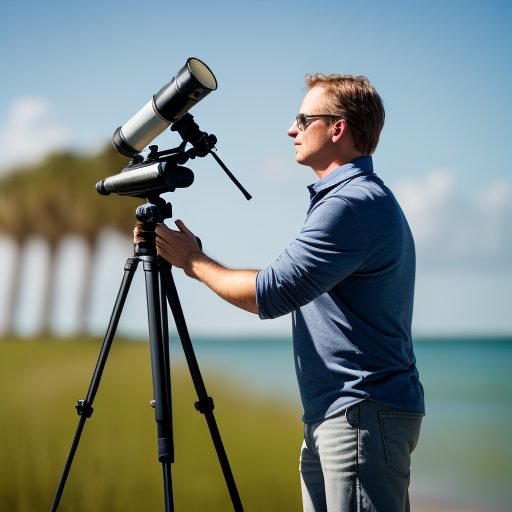
Investing in a specialized field guide dedicated to Florida’s birds is equally essential. These guides offer insights tailored to the region’s avian residents, facilitating quick identification based on unique markings, sizes, and habitats. As you immerse yourself in Florida’s diverse birdlife, a comprehensive field guide becomes an invaluable asset.
Strategic Timing for Bird Watching in Florida
In the realm of bird watching, strategic timing can significantly enhance your experience. The early morning and late afternoon unveil the most enchanting bird activity, with melodious choruses and vibrant displays. Planning your excursions around these optimal times not only ensures heightened bird sightings but also allows you to bask in the soft glow of Florida’s sunrise or sunset, enhancing the overall natural beauty of your bird-watching adventure.
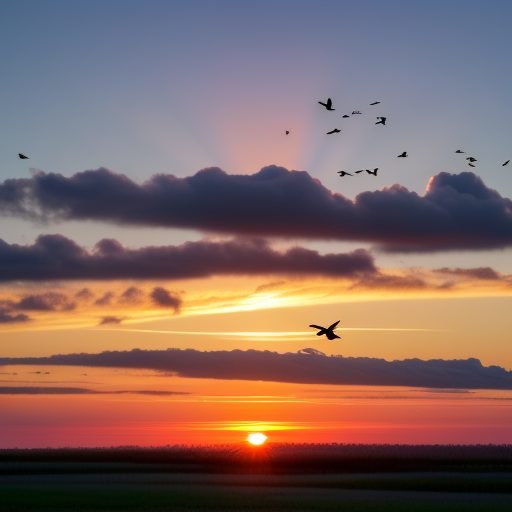
Apparel Essentials for Successful Bird Watching
Dressing appropriately is a key factor for a successful bird-watching expedition in Florida. The state’s climate, though varying, often calls for lightweight and breathable clothing. Dressing in layers enables you to adapt to changing weather conditions, ensuring comfort throughout the day.
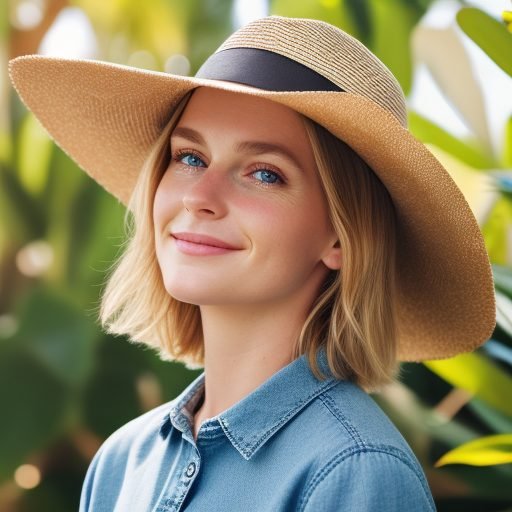
A wide-brimmed hat and sunscreen are essential for protection against the subtropical sun. Opt for comfortable and sturdy footwear, especially if exploring trails and diverse terrains. By choosing the right attire, you not only enhance your bird-watching experience but also stay prepared for the dynamic outdoor environment that Florida offers to avid bird enthusiasts.
Wrapping Up, Prepare for Birdwatching in Florida. It’s an Adventure!
The vibrant avian life of Florida is fantastic for birding enthusiasts. The above are my top 10 bird-watching places in Florida that you can visit. Generally, all year is excellent for birding in Florida, but November through May is perfect because of the wide variety of bird species to observe.
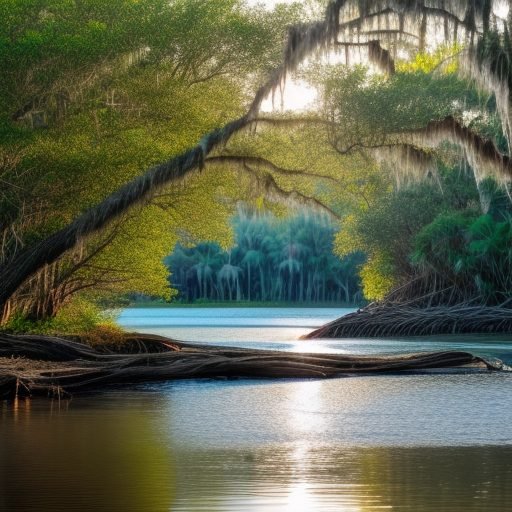
Frequently Asked Questions
What is the best time to go bird watching in Florida?
The optimal time for bird watching in Florida is between November and May. This period aligns with the diverse migratory patterns of birds, offering birders the chance to observe a wide variety of species. However, Florida’s mild climate allows for year-round birding, so enthusiasts can enjoy feathered friends in different seasons.
Are there guided bird-watching tours available in Florida?
Yes, Florida offers numerous guided bird-watching tours led by local experts and naturalists. Joining these tours can enhance your birding experience by providing valuable insights into the best locations, identifying bird species, and understanding the unique ecosystems. Many of these tours cater to different skill levels, making them accessible and enjoyable for both beginners and seasoned bird watchers.
How can I contribute to bird conservation efforts while bird watching in Florida?
Contributing to bird conservation in Florida is commendable and can be done in several ways. Supporting local environmental organizations dedicated to bird conservation, participating in citizen science projects, and adhering to ethical birding practices, such as respecting nesting areas and maintaining a reasonable distance, all contribute to the preservation of Florida’s rich avian ecosystems. Additionally, staying informed about and advocating for habitat protection initiatives ensures a sustainable future for the diverse birdlife in the Sunshine State.
Explore the Beauty: Connect with Us on Social Media! 🌿
Dive deeper into the wonders of Florida’s wildlife and nature by joining our vibrant community on social media.
Follow us on Facebook for captivating visuals, discover the essence of Florida on Instagram, explore curated boards on Pinterest, and stay updated with the latest by following us on Twitter.
Engage with like-minded enthusiasts, find product reviews, and be part of the conversation celebrating the splendors of Florida! 🐦🌴

